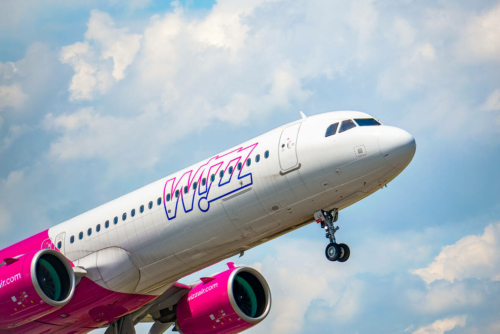Wizz Air near miss shows why you aren’t allowed to move seats before take off ….
Links on Head for Points may support the site by paying a commission. See here for all partner links.
The UK Air Accidents Investigation Branch has just published its report into a potentially dangerous take-off by Wizz Air at Luton Airport.
We don’t usually cover this sort of topic on HfP because it is a little outside our core focus. However, I thought this story was worth sharing because it explains why it is so important that passengers sit in their allocated seats for take off.
Back in January, a Wizz Air flight from Luton to Prague experienced an anomaly at take-off that almost prevented the aircraft from getting off the runway in time.

The aircraft, an Airbus A321, was not responding to the normal pilot control at the point of rotation. That means the aircraft did not take off at the expected speed.
To counter the issue, the captain and first officer responded quickly by increasing the engine power to full thrust for takeoff and almost full aft side-stick.
In plain English, the pilots increased the pitch and thrust of the aircraft beyond the normal take-off requirements for an A321, eventually creating enough lift for the aircraft to clear the runway.
Whilst the aircraft landed safely in Prague with no passengers or crew injured, it triggered a full investigation. It’s obviously not good news if an aircraft finds that it cannot get airborne with the end of runway getting ominously close …..
The problem was caused by an imbalance of passengers
157 passengers boarded the 230-seat A321 and were assigned seats in the forward three cabin zones of the aircraft. Nobody was seated in the fourth, rear, cabin.
This meant that the aircraft was forward-heavy. Normally, passengers are carefully balanced across the full length of the aircraft to ensure that issues like this don’t occur.
Oddly, neither the cabin crew or dispatcher realised that there were no passengers seated at the rear of the plane.
With excess weight at the front of the aircraft, the pilots struggled to leave the ground.
So what happened on this particular flight?
In its assessment, the UK Air Accidents Investigation Branch noticed that a last minute aircraft swap meant that the larger A321 with 230 seats replaced the originally scheduled A320 with 180 seats.
An aircraft swap normally sends an automated email to both the operational and passenger services departments.
The operational team is meant to re-calculate the load based on the updated A321 aircraft. There would be a requirement to seat passengers in all four zones of the aircraft cabin, from front to back.
In the case of this particular swap, a technical fault meant that the messages were not sent.
Only the operational team at Luton were informed of the change. Unfortunately, the passenger services department was not told and did not revise the allocated seating for the flight. Passengers took the same seats they were allocated for the smaller A320, which meant that no-one sat at the back as those rows did not previously exist.
When cabin crew say you can only change seats after take-off, this is why
Ultimately, the positioning of passengers is a carefully controlled part of balancing an aircraft for take-off. This is why, even on virtually empty flights, you might find yourself sat at the back of the plane.
Cabin crew aren’t being mean spirited when they ask you to wait to swap seats until the aircraft has reached its cruising altitude.
The full AIB report can be read here. Amusingly it chose not to name Wizz Air as the airline responsible, but the report then makes numerous references to the airline’s control centre being in Budapest …..



 Rob
Rob 




Comments (67)